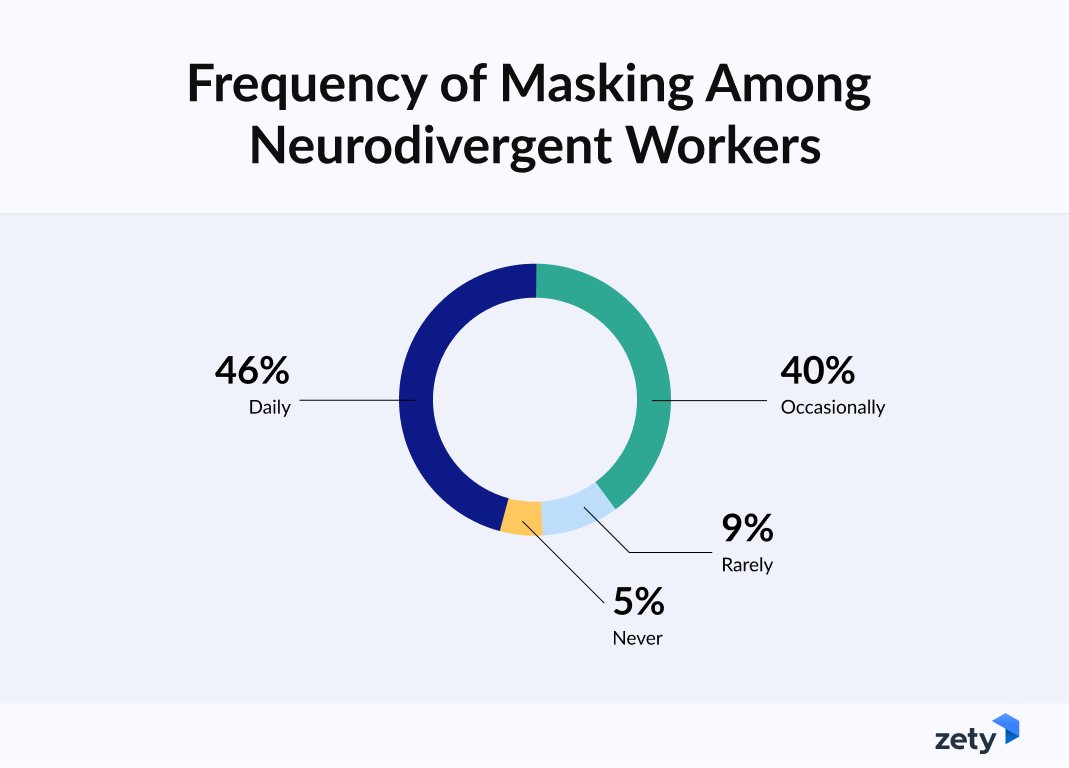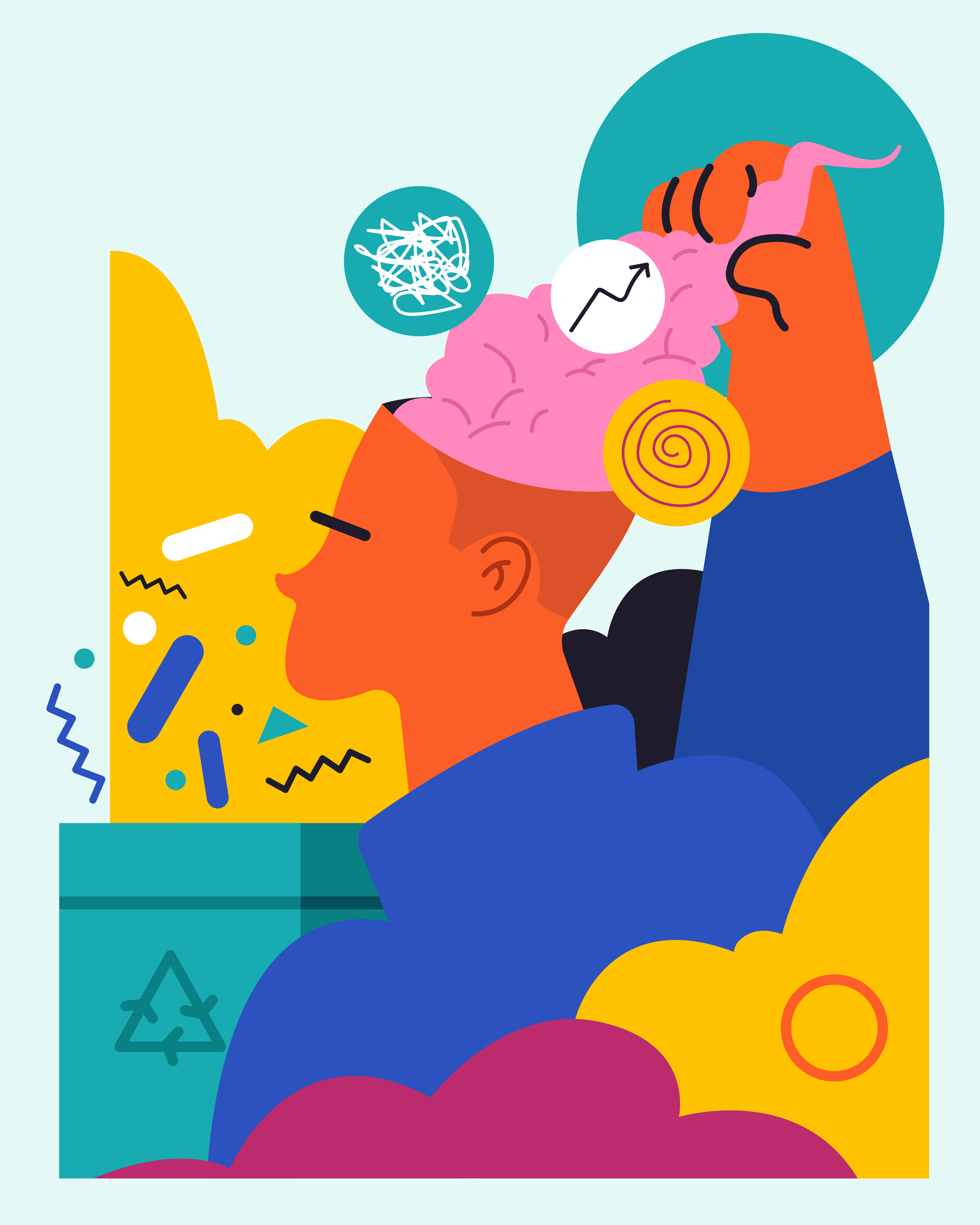
How do neurodivergent professionals really experience today’s workplace? Zety’s Neurodivergence in the Workplace Report—based on a May 2025 survey of nearly 900 neurodivergent U.S. workers—pulls back the curtain on how hiring practices, workplace culture, and performance expectations often create unspoken hurdles.
While neurodivergent individuals bring invaluable skills in areas like systems thinking, creativity, and pattern recognition, many feel forced to mask their identities or overperform to gain the same recognition as their neurotypical peers.
Here’s a breakdown of the key findings, and what they mean for job seekers, hiring teams, and employers alike.
Key findings:
- Traditional hiring methods create barriers: 93% of neurodivergent employees believe hiring practices like timed tests or unstructured interviews work against them.
- Masking is part of daily work life: 46% adjust their communication or behavior daily to align with workplace norms.
- High rates of burnout persist: 93% have experienced burnout related to a lack of support for their neurodivergent needs.
- Performance pressure is high: 88% feel they must work harder than neurotypical peers to be seen as equally competent.
- Workplace culture can be exclusionary: 51% have been subjected to jokes or insensitive comments.
Hiring Practices Leave Neurodivergent Candidates Behind
The challenges often begin before a job offer. While 66% of respondents report disclosing their neurodivergence during the hiring process, many believe the structure of hiring puts them at a disadvantage:
- 93% say traditional methods like timed assessments and unstructured interviews create unfair barriers.
- 93% believe they were passed over for a job due to perceived bias related to neurodivergence.
- 94% have felt pressured to avoid disclosing or discussing their neurodivergence on job applications or in interviews.
What this means: Conventional hiring methods may inadvertently filter out qualified talent. Creating more inclusive, flexible application processes could unlock access to a deeper and more diverse candidate pool.
Disclosure and Accommodation in the Workplace
Deciding whether—and how—to disclose neurodivergence on the job is a deeply personal decision that can affect access to accommodations and workplace well-being.
Disclosure patterns vary:
- 61% share with both their manager and coworkers
- 24% disclose only to their manager
- 9% disclose only to coworkers
- 6% disclose to no one
What this means: Many professionals still fear stigma, despite growing awareness about the benefits of neurodiversity in the workplace. Encouraging a culture of psychological safety can lead to better communication and more effective accommodations.
The Pressure to Adapt and Overperform
Many neurodivergent professionals report navigating unspoken expectations around communication, behavior, and performance. A majority adjust their behavior to align with conventional workplace norms:
- 46% do so daily
- 40% occasionally
- 9% rarely
- 5% never

This constant pressure often takes an emotional and physical toll.
- 88% say they feel the need to outperform neurotypical peers just to be perceived as competent.
- 93% have experienced burnout resulting from their neurodivergent needs being unmet.
What this means: When employees feel forced to mask who they are, they spend energy managing appearances instead of focusing on meaningful work—contributing to burnout and lost productivity.
Bias, Exclusion, and Missed Potential
Only 5% of respondents said they had never experienced negative or biased treatment related to their neurodivergence. The majority have faced exclusionary or discriminatory behavior:
- 53% were left out of meetings or important projects.
- 51% were subjected to jokes or insensitive comments.
- 49% were micromanaged based on inaccurate assumptions.
- 43% faced disciplinary action for behaviors tied to their neurodivergence.
- 32% were denied promotions or growth opportunities.
- 24% felt compelled to overperform to be seen as capable.
- 24% experienced social isolation or a lack of manager support.
What this means: These numbers reveal a pattern of workplace exclusion—not isolated incidents. Without intentional efforts to support neurodiversity in the workplace, organizations risk disengaging and undervaluing high-potential employees.
Career Guide for Neurodivergent Professionals
To help neurodivergent job seekers navigate their careers with clarity and confidence, Zety has released a free resource tailored specifically for their needs. The Neurodivergent Job Seeker’s Guide offers practical strategies to reduce stress and provide support at every stage of the job search—from resume writing to interviews and disclosure decisions.
The guide includes:
- Resume tips aligned with common neurodivergent strengths and communication styles
- Interview preparation strategies, including how to request ADHD accommodations at work, among other neurodiverse conditions
- Guidance on workplace disclosure, self-advocacy, and managing burnout
Neurodivergent professionals are navigating a world of unspoken expectations, often without adequate support, but that doesn’t have to remain the norm. By challenging outdated hiring methods, embracing accommodations, and fostering inclusive workplace cultures, employers can unlock the full value of neurodivergent talent while building workplaces where everyone thrives.
Methodology
The findings presented are based on a survey conducted on May 1, 2025, of 862 U.S.-based employees who self-identified as neurodivergent. To qualify, participants had to report a formal diagnosis with a neurodivergent condition such as ADHD, autism spectrum disorder, dyslexia, Tourette syndrome, or other cognitive differences. This neurodiversity in the workplace research explored their experiences with hiring, disclosure, accommodations, and workplace culture. The survey included a combination of yes/no questions, multiple-choice responses (including multiple-selection options), open-ended prompts, and scale-based items to assess the prevalence and impact of these experiences.

